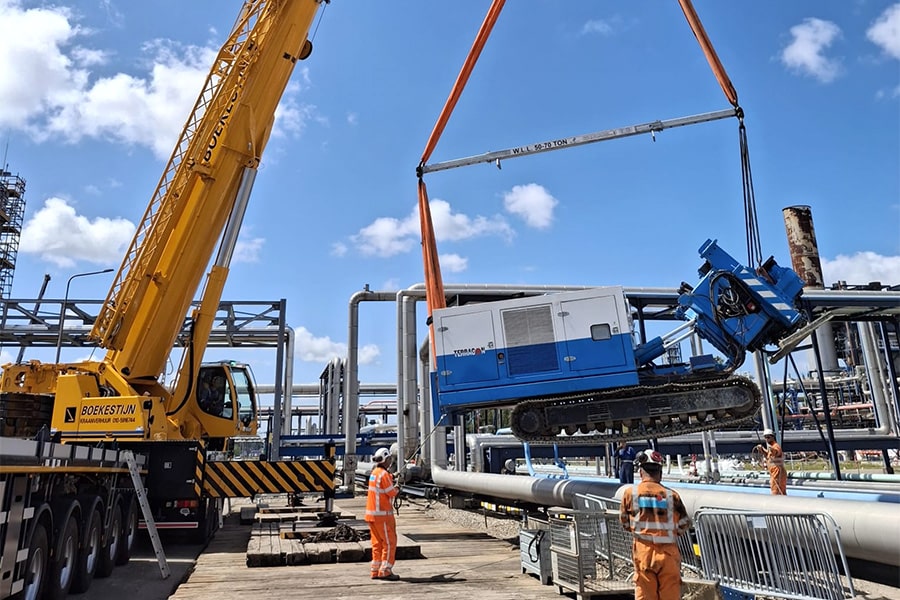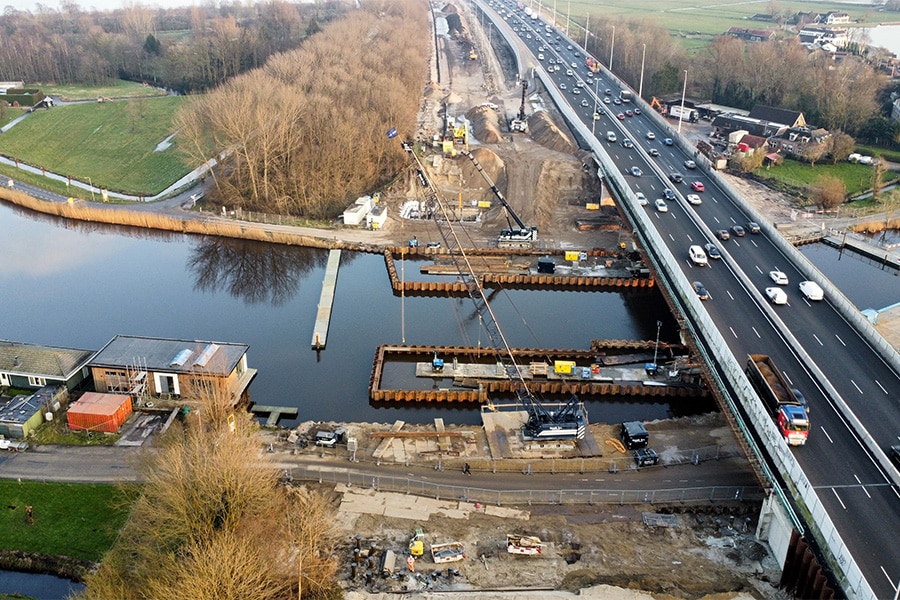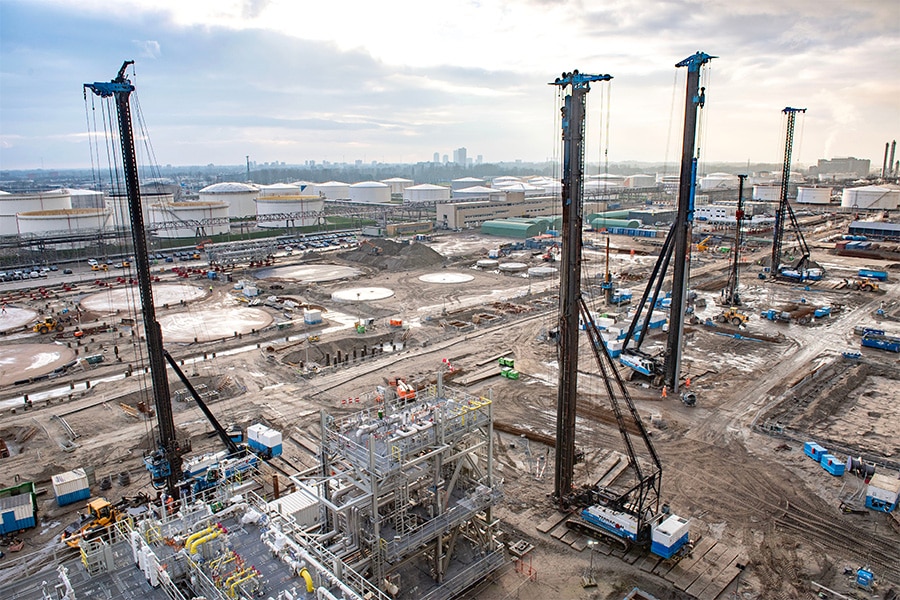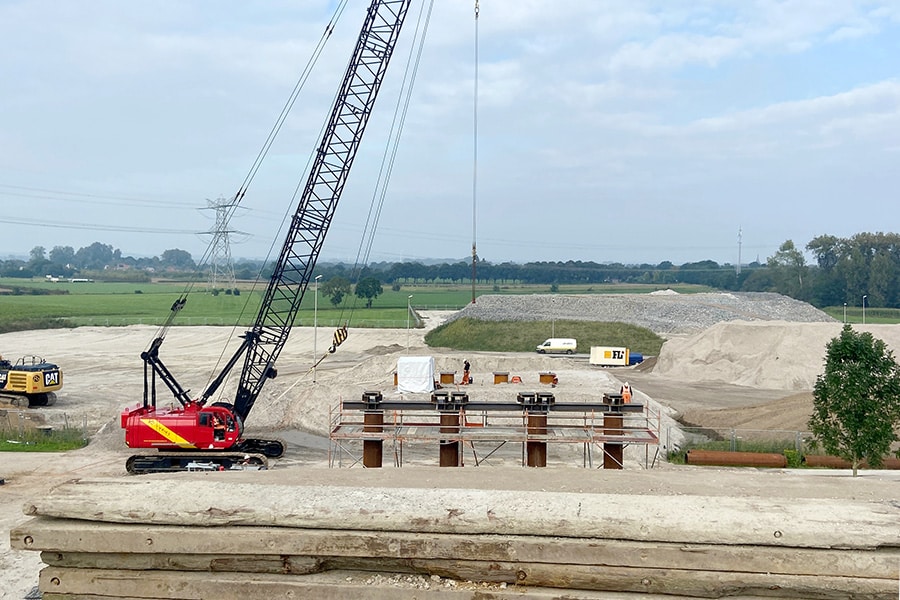
Extra-heavy foundation for temporary transport bridge Julianakanaal
During the widening and deepening of the Juliana Canal, a lot of soil and stones are being excavated, some 1,400,000 tons in total. All this material must be removed. To do this with as little disruption to the surrounding area as possible, a temporary transport bridge has been constructed. Thanks to this bridge, Obbichterweg will remain open to traffic during the work. The foundation for this bridge was made and installed by De Vries Werkendam.
"The subsoil in Limburg and that of the Juliana Canal is very different from elsewhere in the Netherlands," explains Jorrit Smeets, director of De Vries Werkendam. "That requires the necessary expertise and craftsmanship. Reason why Van den Herik-Sliedrecht called us in. Because of the time pressure, they were looking for a reliable party that they know delivers quality and can switch quickly." De Vries Werkendam's expertise lies in concrete and hydraulic engineering. They are at home in the construction of quay walls, bank structures, locks, bridges and (special) concrete structures. In addition, the company has two other complementary disciplines, namely anchoring (under the name De Vries Titan) and prestressing technology (under the name De Vries VSP).
Unpredictable surface
Returning to the subsoil of the Juliana Canal, the ground is hard and somewhat unpredictable. "That was one of the challenges for us. That's why we opted for a heavier foundation construction so as not to risk any shifting or subsidence," explains project manager Gerard van der Stelt. "Van den Herik made the design of the temporary transport bridge. The foundation consists of two times four tubular piles with a steel structure on top. The piles have a diameter of 76 centimeters and 92 centimeters. The piles were vibrated into the ground through a machine with a heavier and oversized vibrating block in a short time. Also because of the somewhat unpredictable and hard ground, we used this heavier vibrating block."
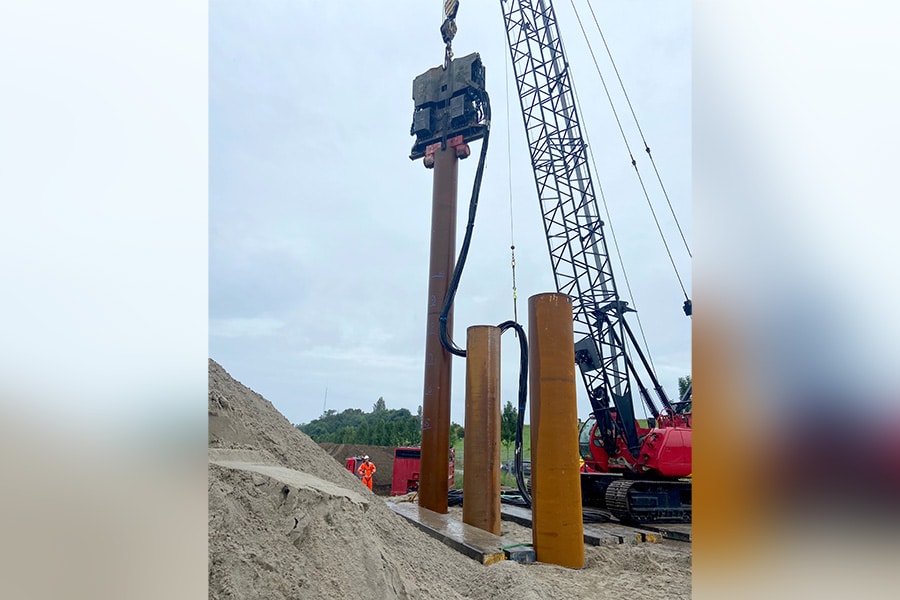
Skilled welding
After the piles were installed in the ground, Van den Herik filled the piles with concrete. Then De Vries Werkendam welded the steel beams onto them. "The welding had to be done extremely accurately, under execution class 3, because of the bridge that had to be placed on it and the design requirements. This requires craftsmanship. We prepared the structure in our own workshop, in accordance with the applicable welding standard NEN 1090." Prior to the installation of the bridge, a soil survey was carried out. This was also necessary to design the bridge. "Based on this design, certain specifications roll out for the size of the tubular piles and supporting structure. We also need this information again to determine the forces required to install the foundation."
Synergy in cooperation
The work on the Juliana Canal was a relatively small job for De Vries Werkendam. "But," Jorrit explains, "it was a job under time pressure and where quality was paramount. The cooperation with Van den Herik is always very good. We complement each other perfectly in terms of specialties, which creates a very nice synergy."
